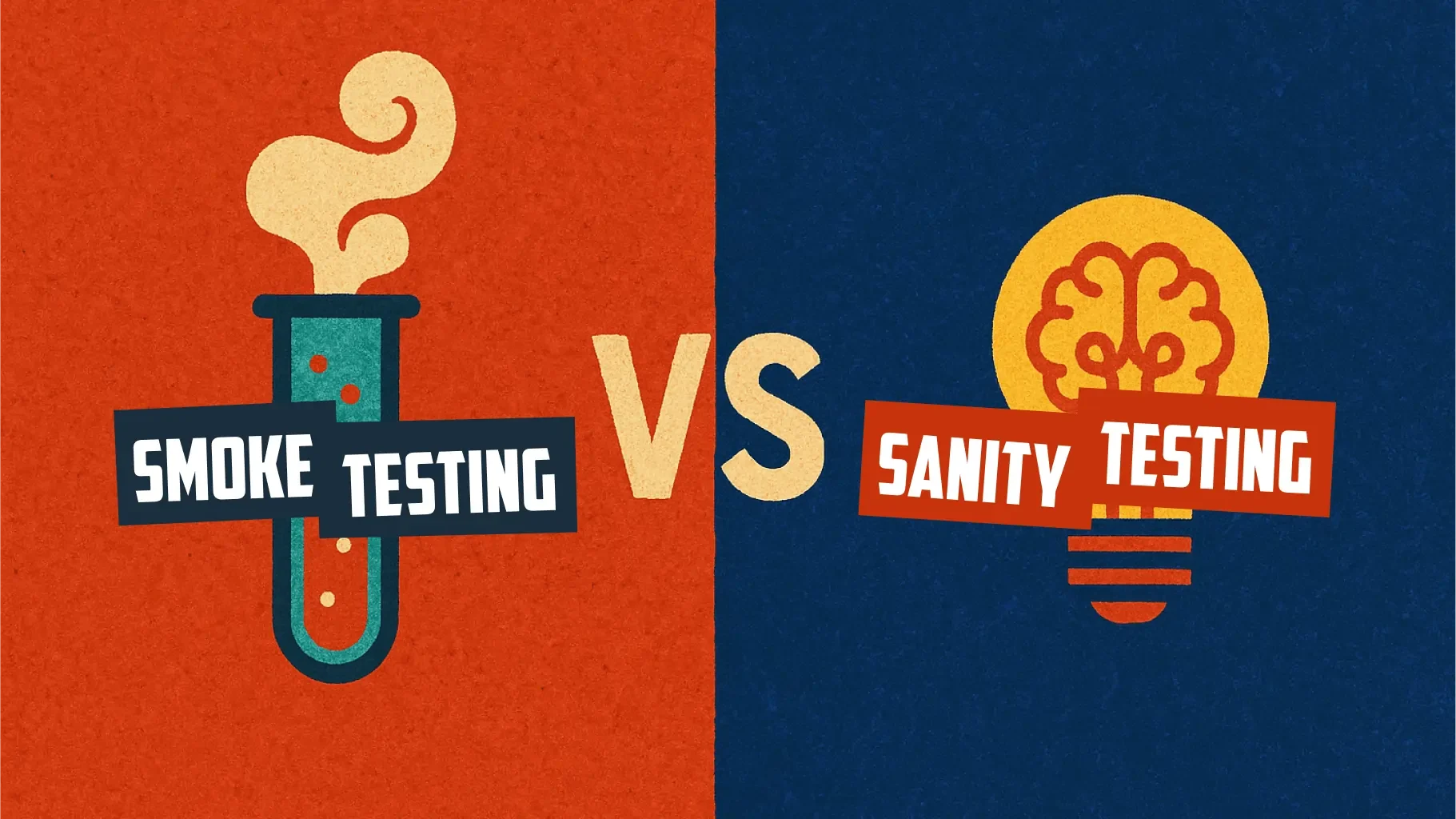Smoke vs Sanity Testing: Key Differences for QA
Introduction
Software releases move fast, and QA teams cannot afford to slow down. With CI/CD pipelines, agile workflows, and rapid feature updates, testing has to be lean, reliable, and strategic. Two often-confused QA practices smoke testing and sanity testing can make a huge difference in efficiency when applied correctly.
Many teams use these terms interchangeably, but they are not the same. Knowing when to run a smoke test versus a sanity test can save hours of wasted effort, reduce bug escape, and help maintain high-quality releases. In this guide, we’ll explain the differences between smoke and sanity testing, provide practical examples, explore their relationship with regression testing, and share automation strategies for 2025.

Get the Mobile Testing Playbook Used by 800+ QA Teams
Discover 50+ battle-tested strategies to catch critical bugs before production and ship 5-star apps faster.
The Role of Smoke and Sanity Testing in QA
Modern testing is not just a one-time phase; it’s a continuous process embedded in every build. Smoke tests act as a quick validation to ensure that a build is stable enough for further testing, while sanity tests focus on specific areas affected by recent changes to verify that updates work as intended. Without this distinction, teams risk over-testing, which wastes time, or under-testing, which allows bugs to slip through.
What Is Smoke Testing?
Smoke testing, also called build verification testing, is a broad, shallow check performed immediately after a build is deployed. Its purpose is to quickly validate overall build stability and catch critical defects before deeper testing begins.
Smoke testing is ideal right after a new build or at the start of a major feature rollout in a CI/CD pipeline. It covers core functionalities, such as login, signup, dashboards, or checkout flows. For example, in a banking app, a smoke test ensures that login, balance display, and transaction history function correctly. If any of these fail, further testing is paused until the build is fixed. Think of smoke testing as the first filter if the build fails here, nothing else matters yet.
What Is Sanity Testing?
While smoke testing checks the overall build, sanity testing zooms in on specific fixes or minor updates. It is designed to confirm that a bug fix or enhancement works and to verify that the build is stable enough for more extensive testing.
Sanity tests are usually conducted after smoke tests have passed, focusing on recently updated functionality. For instance, if a password reset feature is fixed in an app, a sanity test ensures the reset workflow works and does not break related features such as login or email notifications. Sanity testing acts as a spot-check, confirming that fixes are effective without introducing new problems.
Smoke Testing vs Sanity Testing: Key Differences
The main differences between smoke and sanity testing are summarized in the table below:
Attribute | Smoke Testing | Sanity Testing |
Scope | Broad, covers major functionalities | Narrow, focuses on recent changes |
Depth | Surface-level | Deep validation of specific areas |
Timing | Initial build validation | Post-update validation |
Purpose | Ensure overall build stability | Confirm rationality of fixes/updates |
Style | Typically automated | Often manual, less formal |
Quick tip: Smoke tests act as the entry gate to QA, while sanity tests serve as checkpoints along the way.
Relation to Regression Testing
It’s common to confuse sanity testing with mini regression testing, but they serve different purposes. Regression testing is a comprehensive check of the entire system after changes, while smoke and sanity tests are faster, targeted validations. Smoke tests filter unstable builds, sanity tests validate specific fixes, and regression tests ensure that updates haven’t broken existing functionality. Together, these layers help maintain high quality without slowing down CI/CD pipelines.
Test Automation Strategies for 2025
Automation plays a huge role in making both smoke and sanity testing efficient.
What to Automate:
Smoke testing: High ROI, always automated.
Sanity testing: Automate recurring checks, leave unique cases manual.
Tools to Consider:
Smoke testing: Selenium, Cypress, Katalon Studio, Quash (AI-powered automation).
Sanity testing: Postman for APIs, Selenium for targeted scripts.
ROI Tip: Automating smoke tests saves the most time in fast-moving CI/CD pipelines. For sanity, selective automation ensures consistency without over-engineering.
Best Practices for Implementation
Smoke Test Suites
Cover critical user journeys (e.g., login, checkout, dashboard load).
Keep them lightweight and under 15 minutes.
Run them automatically via CI/CD triggers.
Define clear pass/fail criteria.
Sanity Test Cases
Focus on recent changes and related functionality.
Use modular, reusable checklists.
Keep them short (30–60 mins).
Rotate testers for fresh perspectives.
Documentation & Metrics
To keep smoke and sanity testing effective, track results consistently.
Maintain a centralized test suite repository
Use consistent naming conventions (e.g.,
ST_Login_CoreCheck)Track key metrics:
Build acceptance rate
Defect escape rate
Test execution time
Critical path coverage
Cost per defect
These insights help you refine your test strategy over time.
Conclusion
Smoke and sanity testing are not interchangeable; they complement each other. While smoke tests are designed to quickly validate overall build stability, sanity tests focus on ensuring that targeted fixes work as intended. Together, when combined with regression testing, they form a complete QA strategy that balances speed and thoroughness. At Quash, we help QA teams strike this balance by automating smoke tests for faster feedback, streamlining sanity checks for precision, and ensuring that bugs are caught and resolved before they ever reach production.





